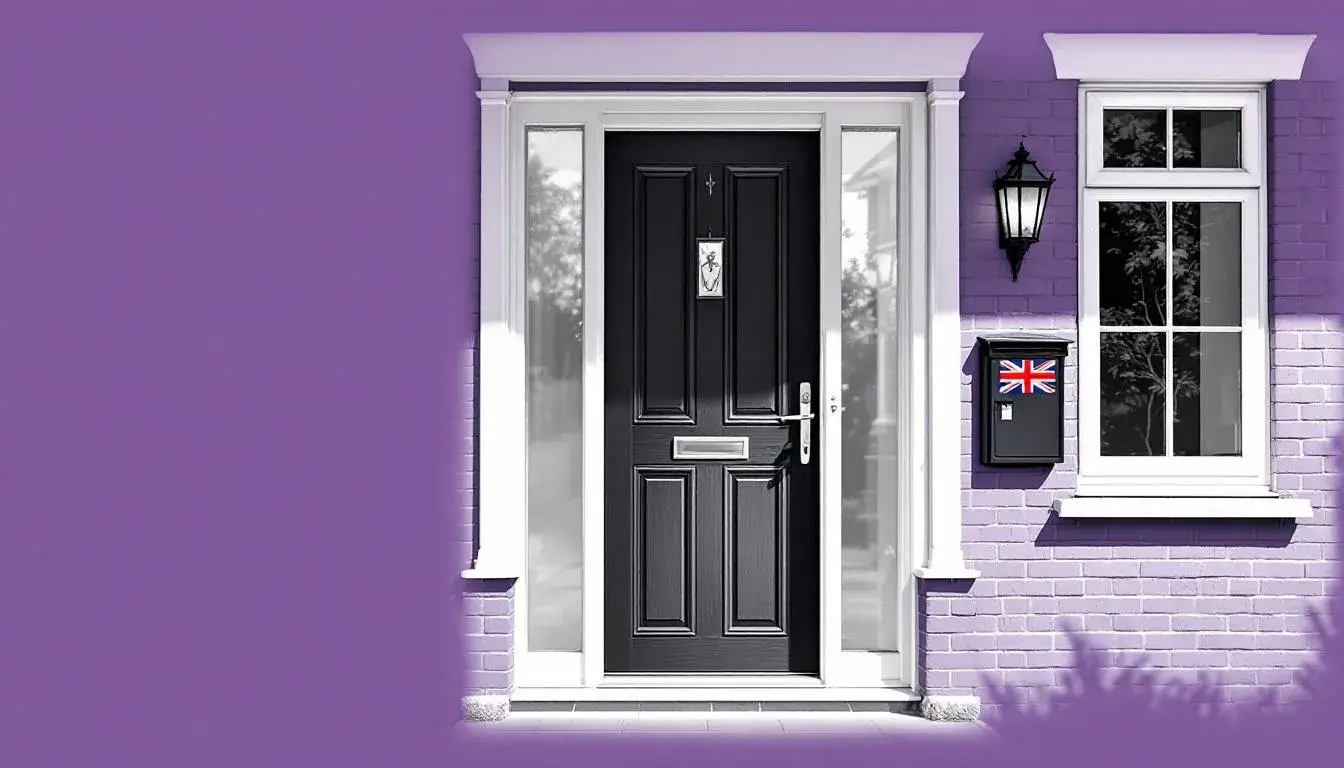
How much equity you need for a secured loan

The equity question, answered
Secured loans use your home as collateral, so lenders focus on the cushion between your property’s value and what you still owe on your mortgage. That cushion is your equity. In practical terms, most UK providers expect you to have a minimum 15 to 25 percent equity before they will consider a secured loan, with mainstream lenders frequently leaning closer to 20 to 25 percent. A handful of specialist lenders will go lower, nearer 15 percent, but that flexibility usually comes with higher rates, tighter affordability checks and stricter terms.
What dictates how much you can actually borrow is the loan-to-value ratio, or LTV. Lenders typically cap total borrowing against your property at 80 to 90 percent of your available equity. Say your home is worth £250,000 and your mortgage balance is £150,000. You have £100,000 equity. Depending on the lender’s LTV policy, a secured loan could range around £80,000 to £90,000. If your equity is slimmer, your borrowing limit falls and your rate may rise. If your equity is stronger, your options usually improve.
It helps to separate mortgages that benefit from government support and second charge secured loans that do not. The UK’s Mortgage Guarantee Scheme supports some 95 percent LTV purchases for eligible first-time buyers and movers, but it does not relax equity expectations for general secured loans used for purposes like debt consolidation, home improvements or large purchases. For those, you should assume equity requirements nearer 20 to 25 percent, with borrowing capped by the lender’s LTV.
Why does equity matter so much? It signals risk. Higher equity means the lender’s exposure is lower if things go wrong, so pricing, maximum loan size and terms tend to be more favourable. That is why homeowners who have seen values rise over recent years may find improved deals, although regional differences across England, Scotland, Wales and Northern Ireland can shift what is available. Valuation accuracy matters too. An optimistic estimate of your home’s worth might boost your hopes, but lenders will rely on their own valuation when running the numbers.
Beyond equity, lenders still test whether the loan is affordable alongside your existing mortgage and bills. They review your credit file, income stability and outgoings. A strong track record can offset marginal equity and secure better rates. A weaker file can do the opposite. Understanding these pieces early helps you set realistic expectations and avoid unnecessary credit checks. As a UK-based retail finance broker, Kandoo can help you navigate criteria across multiple providers so you can focus on what you need, not just what one lender offers.
Understanding APR is not just about percentages - it is about what you will pay in pounds and pence over time. Equity, LTV and fees all shape that bottom line.
Who should read this
If you are a UK homeowner considering a second charge secured loan for home improvements, consolidating expensive credit, or funding a major one-off purchase, this guide will help you gauge eligibility before you apply. It is also useful if your fixed-rate mortgage has years left and you want to raise funds without remortgaging. If you have limited equity or a complex credit profile, you will find realistic options here, including when specialist lenders may help and when unsecured borrowing could be more suitable.
The essentials in plain terms
Equity: The difference between your property’s market value and the outstanding mortgage. Example: £300,000 value minus £200,000 mortgage equals £100,000 equity.
Loan-to-Value (LTV): The percentage of your equity a lender is willing to lend. Many cap secured loans around 80 to 90 percent of available equity.
Minimum equity: Typically 15 to 25 percent needed to qualify, with mainstream lenders often preferring 20 to 25 percent. Lower equity is possible with specialist lenders, often at higher cost.
Affordability: Lenders assess income, outgoings and credit to ensure you can repay alongside your mortgage.
Fees: Expect lender fees of roughly £500 to £800 and broker or arrangement fees that can run from £1,000 to £6,000, often added to the loan.
Government schemes: 95 percent LTV support mainly helps first-time buyers and movers, not general secured loans.
Ways to proceed if you need funds
Second charge secured loan: Keep your existing mortgage and add a separate loan secured on your property. Useful if remortgaging would incur early repayment charges or a higher main mortgage rate. Borrowing limits hinge on equity and LTV, often up to 80 to 90 percent of your equity.
Remortgage to raise capital: Replace your current mortgage with a larger one and release funds. Can be cost-effective if rates are favourable and early repayment charges are minimal, but you risk resetting your mortgage term.
Further advance from your current lender: Add borrowing to your existing mortgage with the same provider. May be convenient but could involve different rates on different loan portions and strict affordability checks.
Unsecured personal loan: No equity required and typically faster, but lower borrowing limits and higher rates than secured options. Suitable for smaller amounts and shorter terms.
Specialist lender route: If equity is tight or credit is complex, a specialist may accept 15 percent equity. Expect higher rates and closer scrutiny of affordability.
The money side - costs, benefits and risks
| Aspect | What to expect | Typical impact |
|---|---|---|
| Interest rate | Lower with higher equity and strong credit | Affects monthly payment and total interest |
| Lender fees | Roughly £500 - £800 | Often added to the loan balance |
| Broker/arrangement fees | Around £1,000 - £6,000 | Can increase APR and total cost |
| Valuation/legal costs | May apply depending on lender | Small upfront or added-to-loan costs |
| Maximum borrowing | Often 80 - 90 percent of equity | Dictates whether your goal is feasible |
| Term length | Usually 3 - 25 years | Longer terms lower payments but increase interest |
| Risk to home | Loan is secured on your property | Missed payments can lead to repossession |
Do you qualify right now
Eligibility rests on three pillars: equity, affordability and credit profile. Start by calculating equity using a realistic market value, then subtract your mortgage balance. If your equity is less than roughly 15 to 20 percent of the property value, most mainstream options will be limited, though a specialist lender might still consider you at higher cost. Next, consider LTV caps. If your equity is £100,000 and the lender will allow 85 percent, your practical borrowing ceiling is about £85,000 before fees.
Affordability is equally decisive. Lenders will look at payslips, bank statements and existing credit commitments to ensure the new payment is sustainable alongside your mortgage. They will stress test the payment against higher rates to see if it still fits your budget. Your credit history matters because it signals how you manage debt. Clean conduct and stable income improve terms. Adverse markers do not automatically disqualify you, but they will narrow your options and increase the price. Regional property values and lending policies can also influence outcomes, particularly outside major urban centres where valuations and demand vary.
From idea to funds - the practical steps
Estimate property value and subtract your mortgage balance.
Work out available equity and likely LTV range.
Check affordability against realistic repayment scenarios.
Review your credit file and correct any errors.
Gather documents - ID, income proofs, statements.
Compare lenders or use a whole-of-market broker.
Receive valuation and formal offer subject to checks.
Complete legal work and draw down funds.
Quick view of upsides and trade-offs
| Pros | Cons |
|---|---|
| Potentially lower rates than unsecured credit | Your home is at risk if you miss payments |
| Larger borrowing limits using property equity | Fees can be significant and added to the loan |
| Keep your existing mortgage deal intact | Higher LTV can raise the rate you pay |
| Long terms reduce monthly payments | Longer terms increase total interest paid |
Red flags before you sign
Take a hard look at the full cost, not just the headline rate. When fees are added to the loan, your APR and total repayable can climb sharply, especially over long terms. Check early repayment charges and whether overpayments are allowed without penalty. Be realistic about valuation - your lender’s assessment may differ from estate agent listings. If your equity is near the minimum, expect more restrictive terms and prepare for rigorous affordability checks. Finally, remember that a secured loan turns unsecured debts into borrowing against your home, changing the stakes if your circumstances change.
If a secured loan is not the best fit
Unsecured personal loan - quicker, no collateral, but usually smaller sums and higher rates.
0 percent purchase or balance transfer credit cards - suitable for short-term borrowing if you can clear the balance before promotional rates end.
Remortgage with capital raise - efficient when early repayment charges are low and market rates are favourable.
Further advance - stay with your current lender and add to your mortgage if terms are competitive.
Common questions, clear answers
Q: What is the minimum equity I need for a secured loan? A: Most lenders want at least 15 to 25 percent equity. Mainstream lenders often prefer 20 to 25 percent, while some specialists may accept around 15 percent at higher cost.
Q: How much can I borrow against my equity? A: Many lenders allow around 80 to 90 percent of your available equity, subject to affordability, credit checks and fees. The lender’s valuation will confirm your exact limit.
Q: Do government schemes help with secured loans? A: The Mortgage Guarantee Scheme primarily supports 95 percent LTV purchases for first-time buyers and movers. It does not typically reduce equity requirements for second charge secured loans.
Q: Will a better credit score lower my rate? A: Yes. Strong credit and stable income usually mean sharper pricing and a wider choice of lenders. Weaker credit narrows options and tends to push rates up.
Q: What fees should I budget for? A: Expect lender fees of roughly £500 to £800 and broker or arrangement fees from £1,000 to £6,000. These may be added to the loan and will increase the APR.
Q: Is remortgaging cheaper than a secured loan? A: It can be, particularly if you can secure a low mortgage rate and avoid early repayment charges. Compare total costs, terms and flexibility before deciding.
Ready to move forward
If the numbers add up, consider getting a broker to stress test affordability, check your LTV against current lender caps and source competitive terms across the market. If your equity is thin or your credit is complex, a specialist route may still be viable. Keep your documents ready, challenge any valuation assumptions early and ask for a full costed illustration so you know the pounds-and-pence impact before you commit.
Important information
This guide provides general information, not advice. Secured loans are subject to status, valuation and affordability checks. Your home may be repossessed if you do not keep up repayments on a mortgage or any other debt secured on it. Terms vary by lender and region.
Buy now, pay monthly
Buy now, pay monthly
Some of our incredible partners
Our partners have consistently achieved outstanding results. The numbers speak volumes. Be one of them!


JACK BYGRAVES LTD

DH DRIVEWAYS & LANDSCAPING










